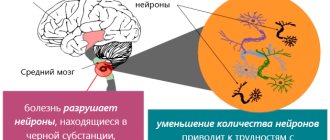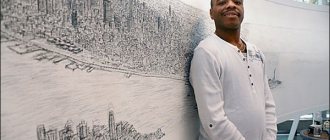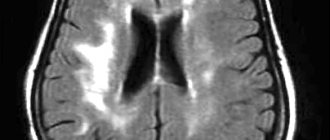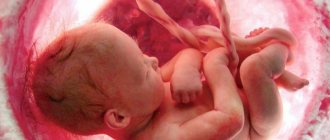Hello dear readers. Many of us have various kinds of fears, but there are those that at first glance seem unthinkable and far-fetched to us, but this is not so. A phobia is a mental disorder accompanied by unreasonable fear. It is common for a person to be afraid of something if a situation or circumstance threatens life or puts us in danger. However, a phobia is a fear that has no rational basis.
Scientists count more than 40 thousand phobias, and their number is only growing every year. Some are afraid of ghosts, some are afraid of heights, others are terrified at the sight of insects. But there are also the most unusual fears, for example, trypophobia.
What is trypophobia, how does it manifest itself, what symptoms indicate the presence of a mental disorder, and how to deal with this illness, you will learn in this article.
All photos that can cause an attack of trypophobia, so as not to harm you, I hid under spoilers! Open and look at these photos only if you are sure that they will not harm you!
What is trypophobia and who are trypophobes?
The term "trypophobia" comes from gr. τρύπα - hole and φόβος - fear. That is, in simple words, it is a fear of holes. Although this phobia is not classified as a type of mental disorder, about 16% of people on the planet suffer from the disease.
Trypophobes experience overwhelming horror and disgust at the sight of a cluster of small holes on something. To understand how developed this fear is in a person, you need to have a trypophobic experience. For example, true trypophobes, when they see cluster holes (a collection of holes and bumps on any surface), experience anxiety, disgust and irrepressible fear. Some develop a panic attack, and even a catatonic stupor.
Today, scientists are actively studying the topic of trypophobia, conducting numerous studies and tests that help people with a fear of holes overcome unpleasant sensations.
What is the most common cause of hole phobia?
Trypophobia in humans is caused by intolerance to any kind of holes and openings. Unfortunately, this disorder is much more serious than one might think. Trypophobes are afraid of anything that may contain many holes: coffee foam, pasta, honeycombs. A striking example of disgust for trypophobes is the seemingly harmless lotus fruit. The presence of round holes causes disgust and anxiety in people.
Even biological materials can cause fear and nausea in trypophobia sufferers. These include human skin (pores, for example), trees, insects and even stones, rocks with pronounced cluster holes.
The most severe case is the fear of holes in food. People suffering from trypophobia react especially negatively to waffle cakes, pancakes, cheese, cucumbers, strawberries, and even citrus fruits. Any hint of a cluster of holes will immediately turn you away from using the product.
Photo of a honeycomb.
Historical roots of trypophobia
In fact, every person, to one degree or another, experiences a dislike for a large accumulation of holes and holes. But healthy people who are not susceptible to trypophobia can easily switch their attention to other details. A trypophobe will not be able to stay in the place where his phobia was identified. He will want to leave the room or place as soon as possible.
Previously, scientists assumed that the fear of holes was inherent in humans by their ancestors. They explained the gene for fear of the accumulation of holes simply: the bodies of dangerous animals, for example, the octopus, posed a direct threat to our ancestors. Spiders and sea creatures had round holes on their bodies. Therefore, even an ordinary person may experience discomfort at the sight of some animals.
Scientists from the University of Essex have established a direct connection between pathogenetic fear. People have an instinctive tendency to reject certain visual images that could previously cause harm to health. We associate objects that cause fear in trypophobia with spots on the surface of the dermis, which are present in most poisonous animals and insects.
Therefore, we inherited from our ancestors a kind of instinctive mechanism: to feel disgust at the sight of such objects. However, such a genetic property can be aggravated by traumatic circumstances and cause a pathological fear of any kind of holes.
There is also another hypothesis for the appearance of trypophobia. It is connected with the work of our brain. According to this theory, we associate cluster holes with infectious diseases or the consequences of skin trauma.
For example, a wasp sting automatically causes an allergic reaction to the insect's venom in a person. The skin becomes blotchy and we can clearly see enlarged pores. Knowing that this is accompanied by pain and discomfort, we subconsciously avoid everything that could cause us harm. The same applies to the consequences of a disease such as measles. The skin becomes covered with pimples, and the holes are clearly visible. This, perhaps unconsciously, leads us to the conclusion that many holes are a possible health hazard.
Trypophobia in the modern world
To date, the medical association does not classify trypophobia as a type of disease. Cluster hole phobia is not a medical condition. However, this does not mean that phobias are not studied by researchers, scientists and psychologists.
Unfortunately, the phobia presented is also not given due attention. And all because there are not so many people with pronounced symptoms. Despite such circumstances, England is actively studying the issue of trypophobia and conducting tests at universities to study the human psyche.
Photo of cells.
Susceptibility to illness
The most common everyday things can trigger an attack of trypophobia: natural phenomena, food, animals, plants, insects, external manifestations of any diseases. What exactly will be the provoking factor for the fear of cluster holes is unknown. The most powerful impact is exerted by:
- multiple passages of insects or their larvae, honeycombs, wasp nests;
- corn cobs, ripe sunflower heads;
- holes in cheese, baked goods, foam on milk or coffee, aerated chocolate;
- Suriname tropical toad;
- geological or architectural objects;
- problematic skin, rashes, acne, enlarged pores, blackheads.
The first manifestations of fear of holes should not be taken lightly. Over time, it progresses, and attacks occur more often. Stimuli can cause visual hallucinations in the form of clustered holes on one's own body. Such visions provoke panic attacks, a desire to take off one’s skin or hide.
Symptoms of trypophobia
As I wrote above, many people feel a slight dislike when they see holes. Even the accumulation of larvae, worms, or anthills can cause us anxiety and anxiety. We will want to leave the place where the hidden threat or unpleasant picture is located. But with trypophobes everything is much more complicated.
The first symptoms of trypophobia
Recognizing them is not so difficult. The main thing is to realize that such a problem really exists. The disorder can be identified by observing two elements, namely:
- Visual perception of clusters. Directly when you see an unpleasant image near you;
- Bodily sensations, i.e. the feelings you experience when visually examining an object.
The brain of trypophobes, when they see holes, immediately gives a signal to their internal systems about the onset of danger. Symptoms of this condition are accompanied by:
- Rapid breathing. Shallow and rapid breathing indicates that a person is wary of clusters;
- Tachycardia. A person may experience rapid increases in blood pressure and rapid heartbeat;
- Lack of oxygen. The trypophobe begins to breathe deeply in order to “breathe”;
- Often, such people begin to rapidly sweat and dry out their mouths. This is another important sign of trypophobia.;
- Nausea. A more serious symptom is the onset of nausea, which in some cases may be accompanied by vomiting. By the way, this reflex was conceived by nature for a reason. A person frees himself from everything unnecessary so that it is easier to escape from danger.
One has only to see something cellular and a person will immediately feel uneasy.
The most obvious symptoms of fear of holes
- Itching on the body. First, the patient begins to scratch his neck (the most vulnerable place), then his arms, and his torso. The itching does not stop for a long time, which in turn causes nervousness and irritability;
- Dizziness. Due to lack of oxygen, a trypophobe may experience clouding in the head. Black spots often appear in the eyes, which also cause hostility and fear in the patient. This may lead to fainting;
- Panic attack. In this case, the trypophobe may behave inappropriately, try to hide from the holes, hide in a corner and cry. A panic attack can manifest differently for each person. Some take a passive position and experience horror alone, while others show aggression and rage.
Most often, the consequences of trypophobia are accompanied by a rash on the skin and hands. After encountering cluster holes, the patient may notice red spots on the body on a bodily level. But over time, they go away without the use of any medications or ointments.
All symptoms can be combined, or just one may appear.
Manifestations of trypophobia
The most difficult defects are holes in the skin. Essentially, these are damaged skin pores. Firstly, expansion occurs due to the inflammatory process, the accumulation of pus and sebum. Secondly, mechanical squeezing of the eel when it is not yet fully ripe leads to ruptures. If inflammation occurs in one place many times in a row, then the elasticity resources of the skin are exhausted. As a result, stretched pores remain large. This is how holes form in the skin.
The intensity of these processes depends not only on how severely the skin was affected. If acne develops in a young person and he seeks help in a timely manner, then usually the pores are not too deformed. In addition, the skin is still very elastic and easily restored. It’s another matter if skin rashes began in adulthood, and acne removal was done independently, by mechanical squeezing. In this case, skin damage will be much more serious.
Types of fear of hole congestion
Today, there are two types of trypophobes. This aspect should be discussed in more detail to make it easier to diagnose the type of disease in the future.
Cutaneous trypophobia
This type of patient cannot tolerate bodily harm. Trypophobia on the body is probably one of the most unpleasant types of fear, as a person experiences panic, horror, nausea and disgust at the sight of:
- Acne or various types of pimples on the body;
- Sebaceous glands and wide open pores;
- Scars left after acne;
- Necrosis of the dermis.
It is not possible for a trypophobe to withstand all these physical circumstances. Considering that skin problems, to one degree or another, occur in all people, trypophobes have a hard time. Moreover, some patients even narrow their social circle and prefer homework to group work. With such asociality, the help of a specialist is necessary. I will describe below who you should contact.
Photo of a hand.
Cluster trypophobia
This type includes all other types of holes. These include:
- Food products (bread, buns, coffee, pasta, etc.);
- Sponge algae;
- Some types of flowers and seeds, as well as trees;
- Tunnels that were created naturally by insects or animals.
One way or another, with cluster trypophobia, a person can avoid meeting potential danger. That is, the patient may not buy scary products, not look at them in the store (although sometimes this can be difficult), and avoid wild nature.
Photo of a porous chocolate bar.
General manifestations
It’s scary to think, but approximately every seventh inhabitant of the Earth sees a real and inexplicable threat in porous chocolate, honeycombs or lotus fruit.
The first reaction to seeing cluster holes, in any of their manifestations, is an alarming state. With further contact with the irritant, other signs begin to appear. This psychosomatic deviation can be expressed by the following symptoms:
- growing fear, reaching the point of panic;
- increased sweating;
- overly pale or red skin;
- skin rashes;
- unstable heartbeat;
- trembling of the whole body or just the limbs;
- irritability and uncontrollable aggression;
- urge to vomit;
- muscle spasms, cramps;
- acute headache;
- loss of orientation.
A person suffering from trypophobia experiences a special, piercing, vivid feeling of disgust or disgust at the sight of a cluster of holes or tubercles.
Causes of phobia of holes and holes
The main researchers of the strange mental reaction to multiple holes, Arnold Wilkins and Jeff Cole, noted that the term “phobia” does not accurately explain the patient’s condition. The opinion of psychologists has come down to the fact that they do not see fear in this disease, but rather disgust and disgust.
If you type “What is trypophobia” or “Trypophobia test” on the Internet, you will be asked to watch a thematic video series on cluster holes. Any footage that graphically depicts hands in honeycombs or wide holes on the hands, face, and body in general will cause disgust and hostility even in a mentally healthy person.
Postmodern artists painted hands and bodies riddled with holes and worms, which looks more like a sick fantasy of the author than an aesthetic artistic masterpiece. And here the question arises by itself: what comes first – multiple holes that cause fear or such images created by someone’s fevered imagination?
It is worth noting that researchers at the University of Essex also identified signs of trypophobia. Thus, from the proposed pictures, where both cluster holes and other images were presented, they noted that the first made them feel disgusted, but the second did not.
British scientists interpret trypophobia as an “evolutionary gene” that we inherited to help us survive the sight of poisonous animals and insects.
Photo of a honeycomb.
Diagnosis of trypophobia
In order to diagnose trypophobia, you need to see a psychotherapist. Further, to confirm this diagnosis you need:
- collect a medical history of the patient. Based on the conversation, the doctor will be able to assume the presence of this pathology or suspect another mental disorder;
- do a test directly for trypophobia. To do this, the patient is asked to view pictures depicting cluster holes. If the test is positive, the doctor will notice such changes in the person as: the emergence of fear even when waiting to view photographs,
- attempts to avoid viewing objects that cause panic attacks,
- an increase in anxiety symptoms with viewing more than 1 photo (if viewing the images did not cause any emotions in a person, we can talk about a negative test and the absence of pathology);
Stages of trypophobia
Of course, this is a mental problem. Accordingly, help needs to be provided to overcome this unmotivated fear. Today there are three types of trypophobia:
- Light form. When a person sees an object of fear, he begins to get nervous and experience anxiety, for example, looking at chocolate or coffee foam;
- Medium shape. In this case, the patient experiences persistent disgust, nausea, and sometimes itching may begin;
- Severe form. A person experiences unbridled fear, leading to a panic attack. Semi-fainting and fainting conditions may also occur.
In any case, with mild or severe trypophobia, you need to take measures to alleviate your condition.
Don't be afraid to see a doctor!
Types of treatment
The specialist determines the severity of the fear of small holes, after which treatment is prescribed. The following types of disease are defined:
- Mild (anxiety from holes, nervousness).
- Moderate (nausea, itching, trembling).
- Severe (panic attacks, vomiting, dizziness, fainting).
The patient’s condition is aggravated by the common myth that trypophobia is a skin disease. The only physical manifestation of fear is a nervous itch. Man-made misconceptions have made life difficult for patients. Biological disgust is of a phobic nature only in severe forms.
Severe symptoms impair quality of life and may affect health. Frequent panic attacks, loss of consciousness and vomiting from the sight of photographs are a reason to consult a psychotherapist. For treatment use:
- taking medications;
- hospital treatment;
- individual sessions with a doctor;
- group psychotherapy;
- psychoanalysis.
Often, a medical professional prescribes a set of measures to achieve a prolonged result. As medicinal support, sedatives and ointments for itching are used. The main goal of therapy is to learn to manage paralyzing fear. The phobia of holes is formed at the subconscious level and cannot be controlled at the initial stages.
To overcome the disease on your own, psychologists recommend resorting to meditation, situational training and relaxation. The test to determine trypophobia is simple:
- When you see skin diseases, uncontrollable panic, shock, and vomiting begin - it’s time to consult a psychotherapist.
- Photographs evoke disgust and hostility, but a person is able to watch them to the end, feeling only anxiety, which means this is a biological reaction of the body.
How to Diagnose Cluster Hole Fear
Considering that today it is impossible to diagnose “trypophobia” due to its not being included in the medical classification of diseases, the disease is classified as obsessive-compulsive disorder. Accordingly, diagnosis and treatment are the same as recovery methods for other types of phobias.
Today, the diagnosis of the condition is carried out by a psychotherapist or psychologist. The only difference is that the first has the right to prescribe drug therapy in the form of sedatives and stronger drugs, while the second does not have such powers.
It depends only on your symptoms which specialist is preferable to go to. However, it should be noted that even with a severe stage of the phobia, taking pills does not guarantee complete relief from the disease. In this case, it is better to find a good specialist who can correctly diagnose your condition and prescribe competent therapy.
Photo of a cellular plant.
How to deal with trypophobia?
Before you begin treatment for trypophobia, you should find out whether the person is really afraid of cluster holes or whether they simply make him feel disgusted and disgusted. If there is no fear or panic, then it is not a phobic disorder.
Since fear of holes is not entirely a mental illness, there is no specific treatment. A psychologist or psychotherapist selects therapy methods for each patient individually, depending on his psychological characteristics.
The following methods are usually used:
- psychoanalysis;
- group or individual therapy;
- hypnotherapy;
- cognitive behavioral therapy;
- drug treatment.
To treat trypophobia, specialists use techniques aimed at relaxation and learning self-control in stressful situations. The patient must learn to control himself and his emotions so as not to panic.
The main thing in the treatment of trypophobia is to learn to distinguish between real and imagined dangers. In fact, a person is not afraid of the holes themselves, but of the dangerous creatures that can hide in them. During the process of psychotherapy, the patient begins to realize that holes in cheese or a bar of aerated chocolate are absolutely safe, since there is no one in them.
Psychotherapists often use this technique: the patient is asked to view pictures - landscapes, views of nature, beautiful flowers, which are diluted with images of objects with cluster holes. By looking at the subject of your phobia, you can reduce the level of fear.
Breathing exercises and elements of meditation and visualization have also proven themselves to be effective in treating fear of holes. Particularly sensitive patients are prescribed medications to reduce anxiety. If panic attacks are accompanied by itchy skin and rashes, your doctor may prescribe antihistamines.
The correct approach to the treatment of trypophobia gives good results, leading to complete relief from it.
Should fear of holes be treated?
A person must answer this question for himself. It is advisable to treat a phobia if it interferes with life, causes discomfort and life seems hopeless. I have already written above about the stages of trypophobia. But as practice shows, even with a mild form of phobia, not only the mood, but also life in general deteriorates.
If you feel that you cannot ignore the smallest details that you associate with clusters, it is better to consult a psychologist. This is a sure sign that you yourself cannot cope with obsessive fear.
Treatment of trypophobia
Any psychological and mental illness does not have a single therapeutic program. Each patient is individual, and the approach to solving the problem is selected taking into account the person’s medical history. There are currently three types of treatment for trypophobia. Let's look at them in more detail.
Pharmacological.
Accompanied by taking sedatives, antihistamines or stronger drugs. Drug therapy is justified only if the patient experiences bodily sensations (itching, dizziness, loss of consciousness). This therapy is aimed at quickly relieving the symptoms of trypophobia, but is not curative.
To reduce the severity of cephalgia of psychogenic etymology and attacks of headaches, short-term courses of anxiolytic drugs, such as benzodiazepine tranquilizers, are used.
For mild symptoms of trypophobia, it is important to prescribe sedatives to improve the patient’s sleep. If the phobia is accompanied by seizures or convulsions, the doctor has the right to prescribe anticonvulsants.
The pills are aimed at relieving symptoms, not treating.
Psychotherapeutic
The work of a psychologist is to normalize the patient’s mental state by conducting a psychotherapeutic course. In this case, there is no clear method of the session, since the psychologist creates the course, taking into account the patient’s condition.
One proven practice is to reduce the symptoms of a panic attack. The patient is offered a series of pictures that evoke peace and aesthetic feelings. Along with inspiring images, the psychologist also shows the object of the patient's fear, and then again calming fragments. Gradually, the specialist increases the duration of display of cluster images, replacing them with pleasant pictures. The presented technique includes proper breathing.
When seeing both images, another trigger begins to go off in the patient’s head: “it’s not as scary as it seems.” The results of such sessions are truly fascinating. Most trypophobes experience a decrease in the intensity of their anxiety reactions, and also gain control over their own behavior.
Perhaps the best way to overcome trypophobia.
Hypnosis treatment
Sometimes a destructive thinking program is so deeply embedded in the psyche that it is not possible to identify it in a waking state. Hypnosis techniques are used to treat panic attacks and aggressive conditions. What is its essence?
Sometimes a person himself cannot truly understand the reason for his fear. Unreasonable worries can be identified in the subconscious, which is impossible to reach in wakefulness. The specialist reduces the control of a person’s consciousness, plunging him into a hypnotic trance, after which he corrects the “plan” of the subconscious.
During a natural half-asleep state, a hypnologist can reveal the true mechanisms of progression of trypophobia. In this state, the hypnologist instills a motivating attitude to eliminate defective thinking structures and introduces a new, constructive model of behavior.
Hypnosis can sometimes help.
How to get rid of trypophobia
Fear is a completely normal and natural human feeling, without which we could not survive. But trypophobia is not just fear. This is a very strong, pathological, painful fear that is impossible to cope with. Few people manage to cope with a phobia on their own. But it’s also not worth putting up with her. It is necessary to recognize the problem and get qualified help.
Phobic disorders are treated by clinical psychologists and psychotherapists. Phobias are not mental illnesses, so psychiatrists do not consider such patients “theirs.”
Various psychological techniques are used to treat trypophobia:
- psychoanalysis;
- gynotherapy;
- cognitive behavioral therapy.
If the patient's physical well-being is impaired, the psychotherapist may prescribe sedatives or tranquilizers that suppress feelings of fear, anxiety and restlessness. In rare cases, trypophobes are prescribed antidepressants.
Sometimes it is enough for the sufferer to hear from an authority figure (the doctor) the conviction that his fear is unfounded. This helps to get rid of fears even without therapy.
Amazing facts about the human brain that everyone should know. What lies behind all fears is the true essence.
Success in treating a phobia largely depends on the patient himself, his desire to get rid of it and his belief in a positive result.
People with anxiety-phobic disorders are advised to master relaxation techniques, such as meditation and autogenic training.
- spend more time in the fresh air;
- switch to proper nutrition;
- get enough sleep;
- avoid stressful situations;
- go out into nature from time to time;
- engage in any sport;
- have a hobby;
- form positive thinking.
So, we have figured out what Trypophobia is. Photos on human skin have clearly demonstrated that such pictures are not real. If you suffer from this disorder and cannot cope with it, be sure to seek help.
On our website you can select a psychologist/psychotherapist or other specialist in any city in Russia and make an appointment with him directly online. You can do this here.
Health and spiritual harmony to everyone!
Author, site expert: Anastasia Svetlova
“I survived a crisis of VSD, suffered from neurosis and panic attacks. I coped with all the disorders. I study psychology, health and spiritual practices. I share my experience and knowledge to help people restore health and internal balance.”
World research on trypophobia
To this day, scientists and psychologists debate how serious trypophobia is. Some believe that this is an obsession, others that it is a mental disorder. But in order not to scare all people, signs of trypophobia in a person are a normal phenomenon.
If you, for example, look at skin eaten away by worms, this will automatically cause rejection and hostility in you. So there is no need to be ashamed of this circumstance. What looks unpresentable, ugly or disgusting causes an understandable reaction in our brain.
Trypophobes, on the other hand, experience an irrational fear of any kind of holes. This is the main feature of the disease. Worldwide research on trypophobia is currently being actively conducted by scientists and psychologists. Despite the fact that there is a category that suffers from this phobia, it is impossible to find a single treatment method.
The human psyche is individual. Some course will be useful for one patient, but not for another. Therefore, a competent psychologist works with the patient individually.
Photo of coral.
How to treat trypophobia?
Most phobias in the modern world have their own treatment, and this disorder is no exception. The most effective form of problem solving is intervention therapy, which focuses on changing the patient's attitude towards a certain situation or object. Treatment should preferably be carried out under the guidance of a psychotherapist or consultant.
Main areas of assistance:
- Lifestyle changes include exercise, eating healthy foods, good sleep hygiene, and avoiding caffeine and other stimulants.
- Cognitive behavioral therapy (CBT) examines thoughts, feelings and behavior. Psychotherapists, working with patients, set certain goals and aim to achieve them. Group therapy is often more effective than individual therapy.
- Impact therapy (desensitization). With this method, the specialist exposes the patient to the phobia in small doses. With continuous exposure, their fear is greatly reduced.
- Relaxation techniques include yoga and meditation exercises, as well as visualization.
- Sometimes the phobia is treated with antidepressants, tranquilizers and beta blockers, which reduce anxiety and panic attacks.
- Combination therapy involves a combination of behavioral and cognitive therapy. In this approach, the patient learns various ways that teach him to manage his fear.
- Simulating a situation makes it possible to observe the behavior of others when in contact with holey objects.
Here is a step-by-step guide that will help you overcome unnecessary fears on your own.
- Prepare for the session. Try to ensure that the treatment is not interrupted by strangers.
- Think and set a goal. Often trypophobes hope to find a way not to react to strange images at all. This is not feasible since most people experience disgust when viewing clustered simulated pictures. The goal of treatment should not be complete absence of reaction, but the degree and duration of it. Some disgust should last a couple of minutes and then go away. You need to be very clear with your goals.
- Focus on the symptomatic sensation. Close your eyes and think about your phobia for about half a minute. You can remember negative images, or focus on the sensations that arise when viewing them. It is necessary to rate the feeling of anxiety in the range from 0 (not affected at all) to 10 (affected greatly). Remember the number.
- Pause. Open your eyes and distract yourself, such as counting or looking at something pleasant. This will cause a surge of beneficial hormones (endorphins and serotonin) in the body, which will deactivate the phobia. You can cross your arms and hit an area of your forearm with them or rub your palms together. When making touches, you need to imagine a walk on a beautiful beach or a hot air balloon flight.
- Turn on a pleasant melody, close and open your eyes several times. This activates a different part of the brain, helping to eliminate the previous symptom. The body may not listen.
- Look into the distance to the right and close your eyes. Repeat five times to activate different areas of the brain.
- Now close your eyes and repeat step 3 counting. If the association score is 0, the session can be ended; if it is higher, go through the following points again.
Repeat until the anxiety value (0-10) decreases. For most people, one to three sessions are required. Unfortunately, only a few are able to independently treat the disease.
Seek help from a professional to determine the exact cause of your phobia and learn how to cope with the symptoms.
https://youtube.com/watch?v=pIqhG_YOivU
https://youtube.com/watch?v=pIqhG_YOivU
Trypophilia is the opposite of trypophobia
Indeed, today there is an unofficial name for another deviation opposite to trypophobia - trypophilia. In this case, a person, on the contrary, experiences a craving for all sorts of clusters of holes, both on the body and on other surfaces. This is also a kind of psychological addiction. A person, looking at lotus fruits or honeycombs, not only does not feel disgust, but, on the contrary, contemplates them and, if possible, even picks at the holes. The phobia of holes gives way to dependence on holes.
Both trypophobia and trypophilia are not normal conditions for humans. The severe stage of tripophilia involves self-harm. Some people deliberately pick holes on their bodies and enjoy the look of them. So, both phobia and addiction have a destructive effect on a person’s outlook and life as a whole.
Photo of a manicure with cells.
Causes of trypophobia
Various hypotheses have been put forward regarding the causes of trypophobia. British scientists Cole and Wilkins believe that it is based on man’s primitive fear of poisonous flowers, animals, and insects. Researchers suggest that trypophobia is an evolutionary advantage for humans. The “pattern” for reacting to objects with holes, in their opinion, was laid down back when any hole in a tree, rock or ground hid a danger to humans.
Other scientists argue that the presence of this phobia is associated with the characteristics of upbringing, the influence on a person’s consciousness of traditions, culture, and characteristics of the nationality to which he belongs.
Another cause of trypophobia is psychological trauma received by a person during his life.
Also called the cause of trypophobia is a genetic predisposition to this type of fear.
The development of trypophobia can be provoked by:
- holes in food (pancakes, baked goods, cheese, veins in meat, honeycombs);
- holes in plants (lotus flower, seeded sunflower flower, peeled corn cob, any pods);
- openings of living organisms (pores, acne, blackheads, pockmarks on the skin);
- natural holes (sea sponges, corals, holes made by larvae, holes in fossils and rocks).
Books about trypophobia
Today there is a lot of psychological literature that helps people get out of difficult situations or look at their lives from a different “angle.” To date, no books have been published about trypophobia, although the work of experts in the field of psychology has improved significantly.
Still, trypophobia is a rather rare disease, but, nevertheless, it deserves no less interest, since ordinary people suffer from unmotivated fear. If you clearly understand that you have such a phobia, then the best way to get acquainted with the possible causes is to visit the office of a psychologist or psychotherapist.
And know that any mental circumstance necessarily has a basis. Despite the fact that the psyche does not hurt, like, for example, the stomach or head, it needs healing. Consider that this is another organ of ours that needs to be monitored and cared for.









